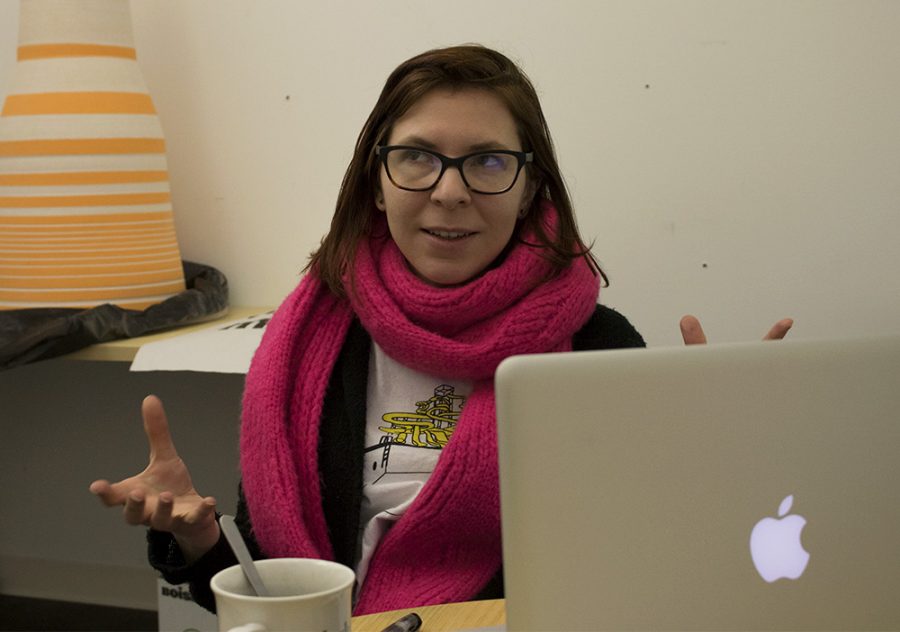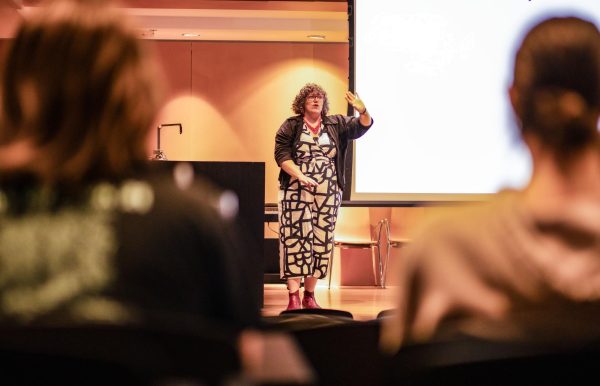Students learn about sound painting Wednesday in Doudna
Loraine Wible teaches people about “Sound Painting” in the Doudna Fine Arts Center Wednesday afternoon. Wible was excited to have twice the number of volunteers that she had expected for her sound painting reveal during her three-day stay at Eastern.
March 8, 2018
Creating a mental image for someone through words might be just as difficult and exciting as you think. Loraine Wible, a native of France and a graduate from the University of Cincinnati, came to Eastern’s Doudna Fine Arts Center to show off “Sound Painting.”
Sound painting is when artists who are normally visually trained decide to play with sound. During her visit, Wible had students and passersby describe details of different paintings and recorded what they said.
On her last day at Eastern, Wible showed some of the results she ended up with in a hallway in Doudna, which allowed people to listen as they walked by.
It was a collage of different voices, translating the physical portraits into words. Each voice was different, and the installation was in no specific order, ranging from male to female voices.
“I am creating this collection of paintings by volunteers … when you play this collection to other people who listen to it, they then paint in their mind a new image out of the one they are hearing. So, through this process we create an infinity of imaginary images,” Wible said.
Wible said the point of this is to trigger the imagination but not in an aggressive way, without colonizing people’s brains.
Instead, she wanted to offer options of direction to those who participated, Wible said.
Wible took a Sound Painting class in graduate school, and she really started to get into it. She began by creating a piece that she called “Sound Monochromes,” where she recorded herself describing paintings that are just one color.
Wible decided once she was done to put these Sound Paintings in the bathrooms of art galleries, so people can listen to them when they are by themselves with a little surprise factor.
“Describing isn’t just a passive action but an active exercise, because you are creating a new image,” Wible said. “You are at a show and you are looking at artwork, then you come to the bathroom and still have artwork, but it is not an aggressive one . . . you can easily tune it out.”
Over the course of her three-day stay at Eastern, Wible said she was overjoyed with the number of volunteers she had participate.
It was twice the amount she had hoped for. Wible is now back at the University of the Arts in Philadelphia, where she is teaching this method to her current students.
Paige Gemein can be reached at 581-2812 or [email protected].














































